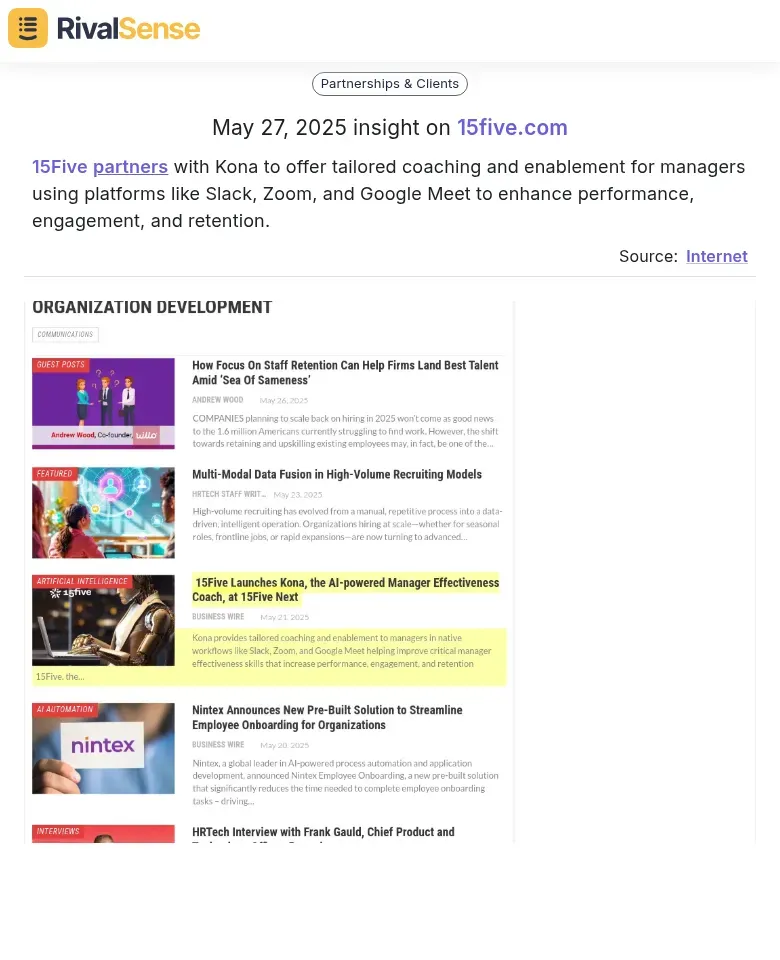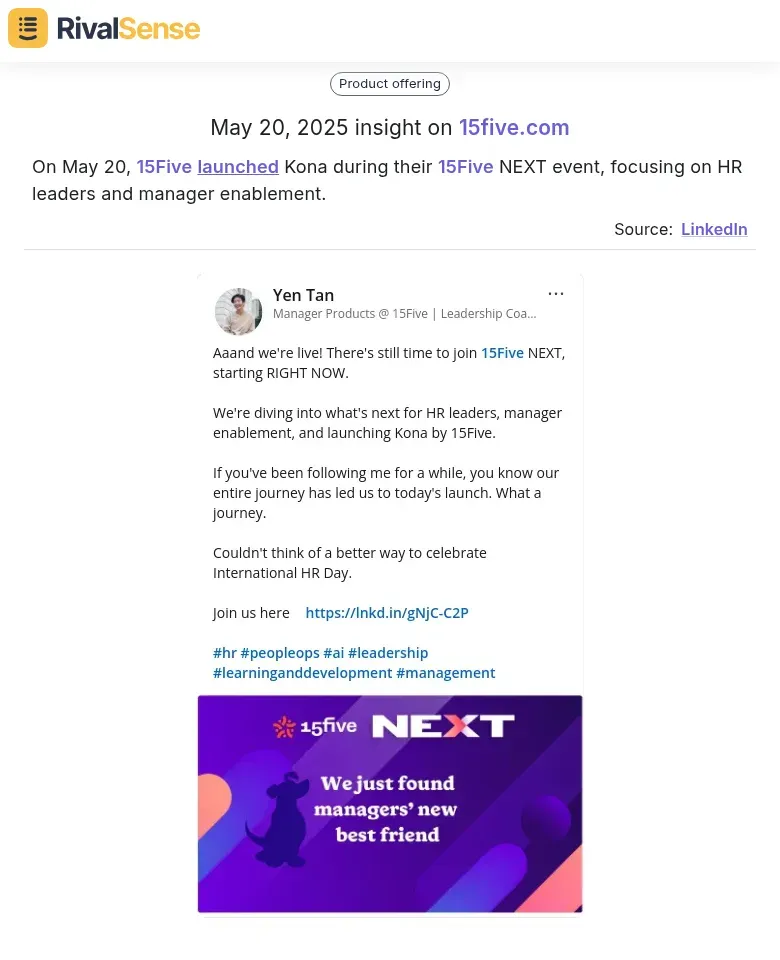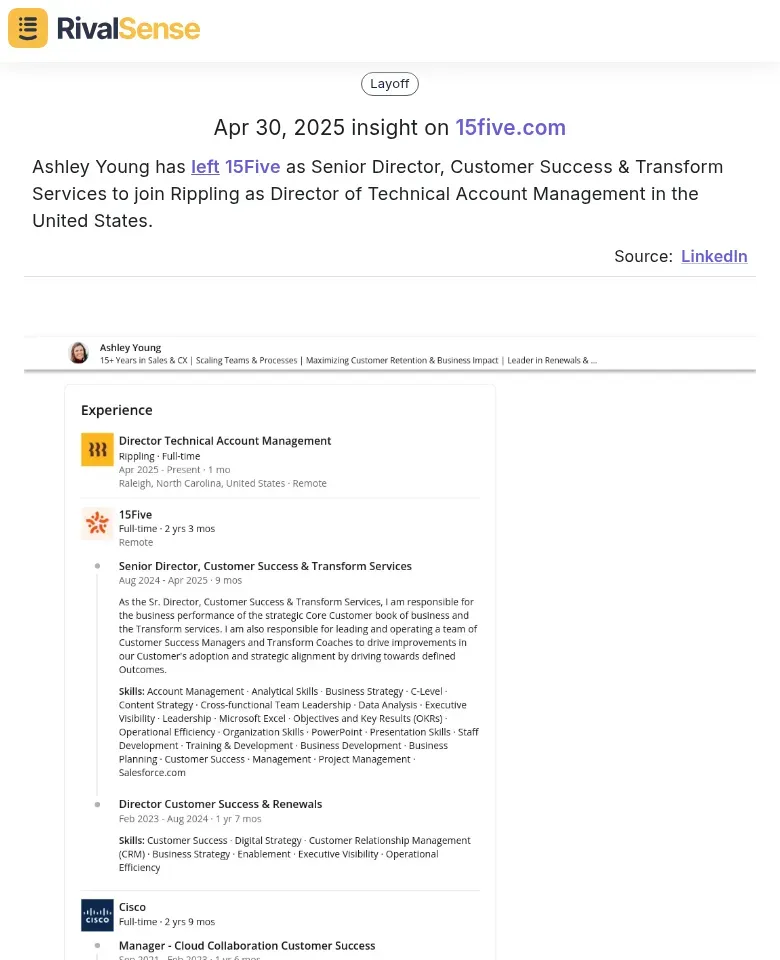Unlock HR Tech Sales Wins: Competitor Tactics Research Templates
In the rapidly evolving HR tech landscape, understanding competitor sales tactics is essential for gaining strategic advantage. By analyzing how rivals attract and retain clients, you can uncover gaps in your strategy and identify differentiation opportunities. HR tech companies increasingly leverage innovative approaches—from AI-driven outreach to strategic partnerships—that expand market reach. Keeping pulse on these moves helps anticipate trends and adapt proactively.
Start by creating a competitor sales tactics research template with sections for pricing models, promotions, and partnerships. For instance, note if competitors offer freemium plans or service bundles. This reveals patterns to inform your sales strategy.
Practical first steps:
- 🔍 Identify Key Competitors: List top players in your niche
- 📱 Monitor Sales Channels: Track websites, social media, and email campaigns
- 🤝 Analyze Partnerships: Document collaborations with platforms/influencers
- 💬 Evaluate Customer Feedback: Study reviews to see what works for them
Systematic tracking delivers actionable insights to refine your approach.
Leveraging Partnerships for Enhanced Offerings
Strategic partnerships amplify your product's capabilities and market reach exponentially. Alignments with platforms like Slack or Zoom meet customers where they operate, boosting engagement and retention. For example, integrating HR software with Slack streamlines communication workflows, making your solution indispensable. Such collaborations add tangible value while expanding your ecosystem.

Why it matters: Tracking partnerships like 15Five's collaboration with Kona (offering coaching via Slack/Zoom/Meet) reveals how competitors enhance value propositions. Spotting these early helps benchmark integration opportunities for your own growth.
Steps to forge successful partnerships:
- 🎯 Identify complementary platforms aligning with customer needs
- ⚙️ Assess technical/operational feasibility
- 🤝 Negotiate mutually beneficial terms
- 📣 Promote integrations in marketing materials
Examples: BambooHR's Slack integration boosted productivity, while Workday's Zoom partnership enhanced virtual HR processes.
Event-Driven Launches and Their Impact
Timing product launches with industry events creates immediate buzz and accelerates adoption. HR leaders actively seeking solutions at conferences become prime prospects. This tactic generates concentrated visibility and positions your offering as cutting-edge.

Why it matters: Monitoring events like 15Five's Kona launch at their NEXT conference shows how competitors target HR decision-makers. Analyzing these reveals optimal timing and messaging for your own launches.
Maximize impact with:
- 🎯 Target events with HR decision-makers
- 📣 Generate buzz through teasers and live demos
- ✨ Showcase innovations solving specific pain points
- 📧 Engage post-event with personalized follow-ups
✅ Success Checklist:
- Identify key events (SHRM, HR Tech Conference)
- Develop event-specific content (whitepapers, videos)
- Train teams for live Q&A
- Track sign-ups and conversions
Talent Movement and Competitive Intelligence
Personnel changes signal strategic pivots before they become public. An influx of AI specialists at a rival may indicate new recruitment tools, while hiring compliance experts suggests regulatory focus shifts. These movements offer early warnings about market direction.

Why it matters: Noticing departures like Ashley Young's move from 15Five to Rippling helps predict organizational shifts. Such insights allow preemptive strategy adjustments.
Monitoring tactics:
- 🔔 Set alerts for executive changes
- 🔎 Use LinkedIn to track strategic role movements
- 📊 Maintain talent dashboards to spot patterns
- 🔄 Update strategies based on quarterly analyses
✅ Action Plan:
- Identify critical roles to watch
- Analyze talent flow between competitors
- Correlate hires with product roadmaps
- Fortify teams in expansion regions
Actionable Insights for Your HR Tech Strategy
Translating Intelligence into Action
- Spot Gaps: If competitors lack AI recruitment tools, prioritize developing them
- Benchmark Metrics: Compare user engagement/satisfaction scores
- Conduct SWOT: Identify strengths (e.g., superior support) vs weaknesses (limited integrations)
Continuous Tracking Framework
- Automate Monitoring: Use tools for real-time updates on features/pricing
- Quarterly Audits: Review competitor marketing and product changes
- Visual Dashboards: Track trends through competitor activity timelines
Building Intelligence Culture
- 🤝 Involve cross-functional teams (product/marketing/sales)
- 🎓 Train staff on intelligence utilization
- 🏆 Incentivize valuable insight contributions
✅ Monthly Execution Plan:
- Review competitors' blogs/social/product updates
- Analyze customer reviews on rival platforms
- Update feature comparison matrices
- Adjust strategies based on findings
Conclusion: Staying Ahead in HR Tech
Competitor analysis isn't a one-time task—it's an ongoing imperative in dynamic HR tech markets. Consistently tracking sales tactics, partnerships, talent moves, and event strategies allows proactive adaptation. Implement structured processes like monthly competitor reviews and real-time monitoring to maintain advantage.
Ready to decode competitor moves?
👉 Try RivalSense Free for automated tracking of product launches, pricing changes, talent movements, and partnerships—delivered in weekly reports. Get your first competitor analysis today!
📚 Read more
👉 Optimizing B2B Competitor Analysis for Financials & M&A Success
👉 How to Leverage Competitor Contract Wins for Strategic Advantage
👉 How to Analyze Competitor Metrics: A Step-by-Step Guide for B2B Leaders
👉 Telehealth Training Programs: A Comparative Analysis Guide
👉 How Veriff's Fraud Insight Spurred Competitor Strategy Shifts
